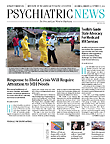The presence of sporadic, noninherited mutations in the brain offers an intriguing explanation for some mental health problems, particularly spectrum disorders like autism or schizophrenia that display a wide range of manifestations and wherein affected people can still be highly functional in some capacities.
But tracking down a single genetic error among the billions of nucleotides in the human genome is difficult enough. If that mutation is also only found in a fraction of brain cells, it can be impossible.
A new effort led by researchers at Boston Children’s Hospital has shown, however, that a technique called deep sequencing can reveal such somatic mutations underlying some brain deformities, demonstrating the potential of this technique for neurological and psychiatric genetics. The study was published in the August 21 New England Journal of Medicine.
Traditional sequencing methods read large swaths of DNA about 30 times over, which is enough to filter out reading errors and develop an accurate composite sequence. But somatic mutations, which arise after conception and therefore would not be present on every DNA strand, often get discarded as well.
“Standard sequencing gives you breadth, but not depth,” said lead study author Saumya Jamuar, M.D., a former clinical fellow at Boston Children’s and currently at the Department of Genetics at KK Women’s and Children’s Hospital in Singapore. “It’s not a reliable tool to identify any mutations occurring at a frequency below 15 or 20 percent of your samples.”
Deep sequencing focuses on smaller, targeted areas of the genome, but reads them several hundred times. Though relatively new on the scene, this method has been successfully applied in cancer genetics, where somatic mutations that arise during a person’s lifetime are common contributors to tumor formation. “We asked ourselves, ‘Can we adapt this technology to work for a neurological disease?’ ” Jamuar said.
He and colleagues at Boston Children’s sequenced blood samples from 158 people with brain malformations such as megalencephaly (enlarged brain) or pachygyria (thicker than normal ridges in the cerebral cortex). They developed a panel of target genes based on known or proposed risk factors (14 or 54, depending on the condition) and achieved an average depth of 300 read-throughs.
They identified and confirmed disease-causing mutations in 27 of the patients, including eight somatic mutations with a frequency of between 5 percent and 35 percent. As expected, the five mutations below 17 percent frequency were not detectable when traditional sequencing was applied to those regions.
For the patients who remained undiagnosed, their mutations could be outside one of the selected panel genes or occur below 5 percent frequency, and subsequent deep sequencing efforts might be able to identify them. The possibility exists, of course, that the patients have mutations that cannot be identified in blood samples.
“This is a limitation, as the later a mutation arises during fetal development, the fewer tissues contain that mutation,” said Jamuar, who noted that the tissues eventually forming the blood and brain separate in the embryo around day 15. However, the lining of the cheek and brain are more closely related embryologically, offering the possibility that mouth swabs might contain a higher proportion of neurological somatic mutations.
Identifying mutations that underlie physical malformations is one matter, but Brian O’Roak, Ph.D., an assistant professor at Oregon Health and Science University who studies the genetics of autism, cautions that deep sequencing may not be ready to jump to the psychiatric arena just yet.
“For autism, we are just starting to turn the corner in terms of establishing validated risk factors as opposed to risk candidates,” he told Psychiatric News.
“In addition, there are a lot of open questions related to somatic mutations in general, including their role in normal brain development and diversity.”
Jamuar believes deep sequencing still can offer a complimentary approach alongside existing genetic tools to uncover the genetic roots of psychiatric disorders. Even analyses not directly focused on autism could be informative, as there are strong associations between physical malformations like megalencephaly and autistic features.
This study was supported by grants from the National Institutes of Health, the University of Washington Center for Mendelian Genomics, the Manton Center for Orphan Disease Research, and the Allen Foundation. ■
An abstract of “Somatic Mutations in Cerebral Cortical Malformations” can be accessed
here.
